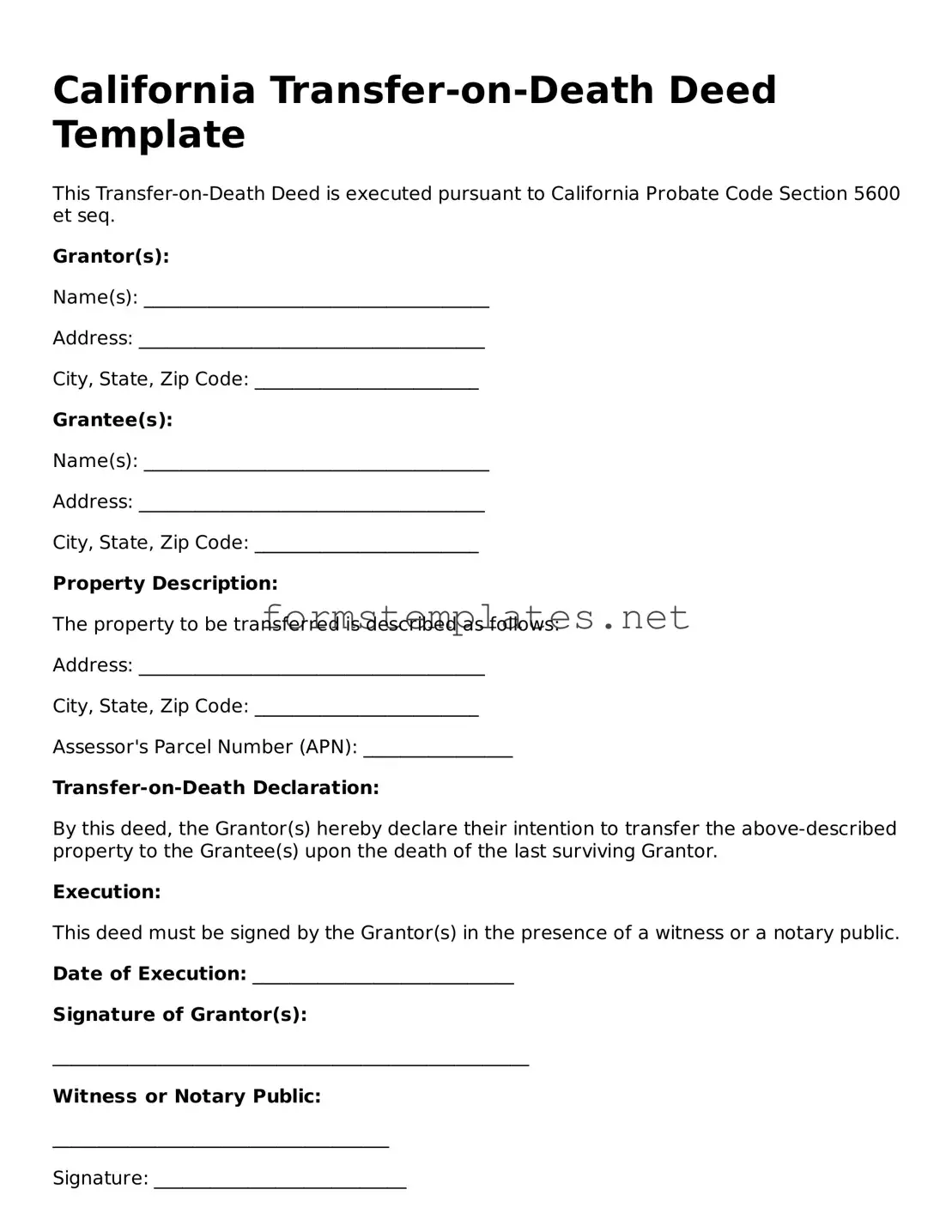California Transfer-on-Death Deed Template
This Transfer-on-Death Deed is executed pursuant to California Probate Code Section 5600 et seq.
Grantor(s):
Name(s): _____________________________________
Address: _____________________________________
City, State, Zip Code: ________________________
Grantee(s):
Name(s): _____________________________________
Address: _____________________________________
City, State, Zip Code: ________________________
Property Description:
The property to be transferred is described as follows:
Address: _____________________________________
City, State, Zip Code: ________________________
Assessor's Parcel Number (APN): ________________
Transfer-on-Death Declaration:
By this deed, the Grantor(s) hereby declare their intention to transfer the above-described property to the Grantee(s) upon the death of the last surviving Grantor.
Execution:
This deed must be signed by the Grantor(s) in the presence of a witness or a notary public.
Date of Execution: ____________________________
Signature of Grantor(s):
___________________________________________________
Witness or Notary Public:
____________________________________
Signature: ___________________________
Date: ________________________________
Further Information:
- This deed should be recorded with the county recorder's office where the property is located.
- Consult with an attorney if you have questions about the implications of this transfer.
- This deed will not affect any existing liens or debts on the property.
Disclaimer: This template is provided as a general guide only. It is recommended to seek legal advice to ensure compliance with local laws and personal circumstances.
